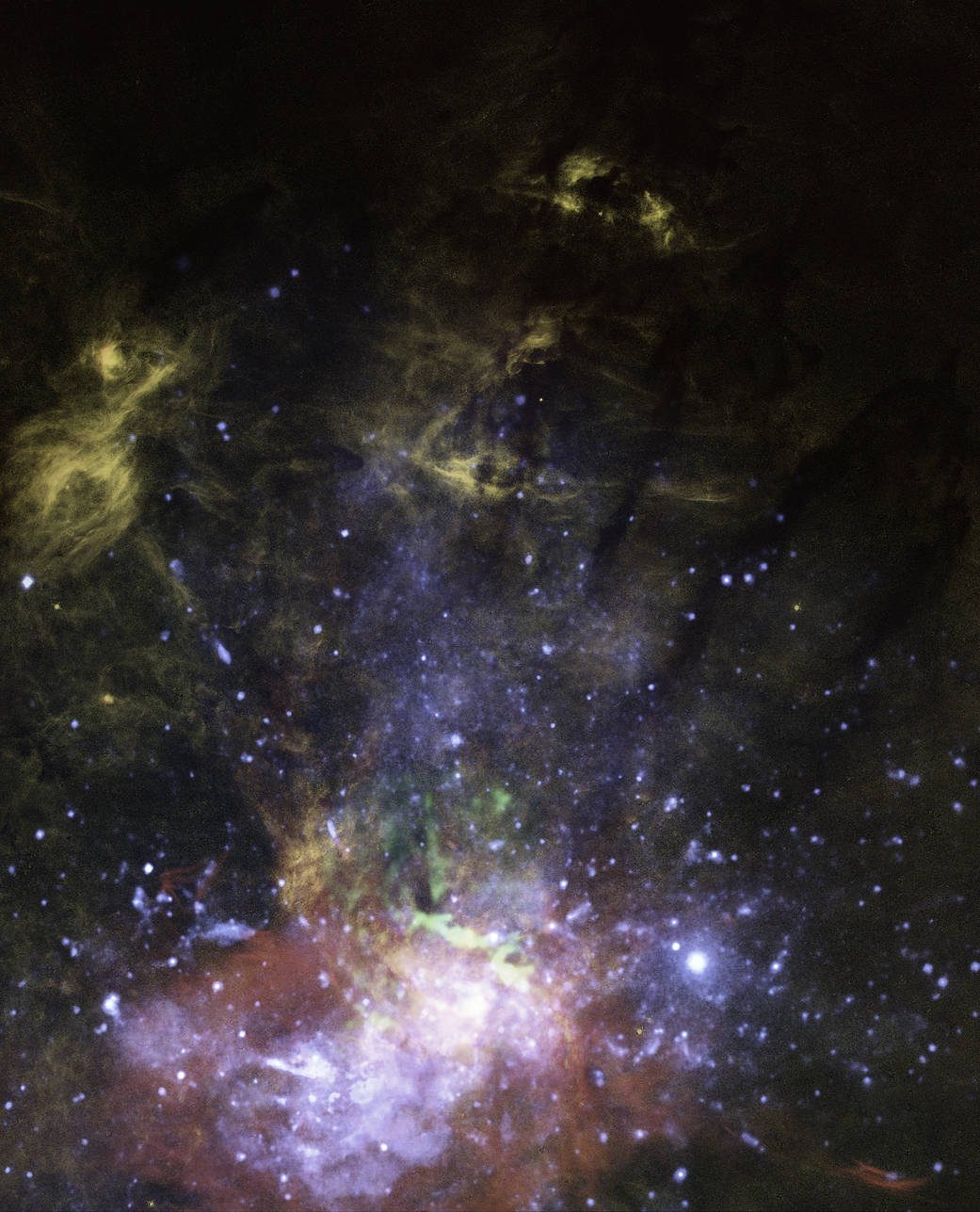Our Milky Way’s central black hole has a leak. This supermassive black hole looks like it still has the vestiges of a blowtorch-like jet dating back several thousand years. NASA’s Hubble Space Telescope hasn’t photographed the phantom jet but has helped find circumstantial evidence that it is still pushing feebly into a huge hydrogen cloud and then splattering, like the narrow stream from a hose aimed into a pile of sand.
我们银河系中心的黑洞有一个裂缝。这个超大质量黑洞看起来仍然保留着几千年前喷灯状喷流的遗迹。NASA的哈勃太空望远镜还没有拍摄到这个幻影喷流的照片,但它已经帮助发现了一些间接证据,证明喷流仍然在微弱地推动一个巨大的氢云,然后四处飞溅,就像一根软管射向一堆沙子的狭窄水流。
This composite image is of X-rays, molecular gas, and warm ionized gas near the galactic center. The orange-colored features are of glowing hydrogen gas. One such feature, at the top tip of the jet is interpreted as a hydrogen cloud that has been hit by the outflowing jet. The jet scatters off the cloud into tendrils that flow northward. Farther down near the black hole are X-ray observations of superheated gas colored blue and molecular gas in green. These data are evidence that the black hole occasionally accretes stars or gas clouds, and ejects some of the superheated material along its spin axis.
这张合成图像是银河系中心附近的X射线、分子气体和热电离气体。橙色代表发光的氢气。喷流顶端的一个这样的特征被解释为被流出喷流击中的氢云。喷流从云层中散开,形成向北流动的卷须。在黑洞附近更远的地方是对蓝色过热气体和绿色分子气体的X射线观测。这些数据证明黑洞偶尔会吸积恒星或气体云,并沿其自旋轴喷射出一些过热物质。
Image Credit: NASA, ESA, and Gerald Cecil (UNC-Chapel Hill); Image Processing: Joseph DePasquale (STScI)
影像来源:NASA, ESA, and Gerald Cecil (UNC-Chapel Hill);影像处理:Joseph DePasquale (STScI)







